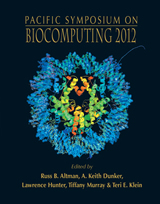Session introduction: Modeling Host-Pathogen Interactions: Computational Biology And Bioinformatics For Infectious Disease Research
Jason E. McDermott1, Pascal Braun2, Richard Bonneau3, and Daniel R. Hyduke4
1Pacific Northwest National Laboratory, Computational Biology and Bioinformatics Group, Richland, WA 99352 USA;
2Center for Cancer Systems Biology (CCSB) and Dana-Farber Cancer Center (DFCI), Boston, 450 Brookline Avenue, MA 02215 and Harvard Medical School, Department of Genetics, 240 Longwood Avenue, Boston, MA 02115 ;
3Departments of Biology and Computer Science, New York University. New York, NY;
4Bioengineering, University of California San Diego, San Diego, CA
Email: McDermott@pnnl.gov
Pacific Symposium on Biocomputing 17:283-286(2012)

Abstract
Infections are a major cause of both human disease and loss of crop yields and animal stocks and thus cause immense damage to the worldwide economy. The significance of infectious diseases is expected to increase in an ever more connected warming world, in which new viral, bacterial and fungal pathogens can find novel hosts and ecologic niches. At the same time, the complex and sophisticated mechanisms by which diverse pathogenic agents evade defense mechanisms and subvert their hosts networks to suit their lifestyle needs is still very incompletely understood especially from a systems perspective [1]. Thus, understanding host-pathogen interactions is an important and timely topic.
[Full-Text PDF] [PSB Home Page]